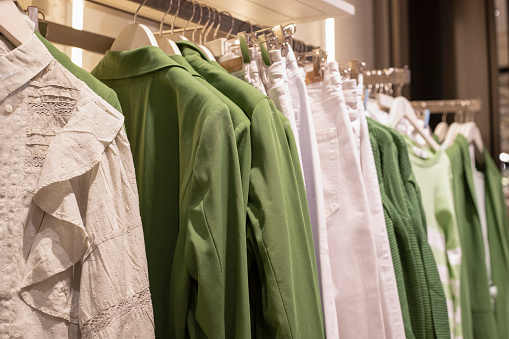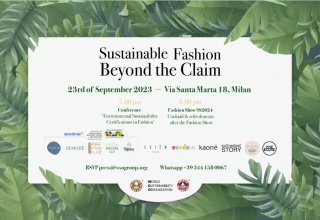
In the spirit of the theme of this year’s Glitz Africa Fashion Week ‘Creativity and Sustainability’, we bring you some tips on contributing to the global agenda of pursuing sustainable fashion from Vogue.
- Buy less and buy better
It may be a cliche, but the mantra “buy less and buy better” is key when you consider that a staggering 100 billion garments are being produced globally every year. Before making a purchase, sustainability consultancy Eco-Age’s chief brand officer Harriet Vocking advises that you ask yourself three all-important questions: “What are you buying and why? What do you really need? Will you wear it at least 30 times?”
- Invest in sustainable fashion brands
Buying better can also mean supporting designers who are promoting sustainable practices, who all use upcycled textiles in their designs. Narrowing your search for specific items can also help.
- Shop secondhand and vintage
With secondhand and vintage now increasingly accessible, consider buying pre-loved items when looking to add to your wardrobe. Not only will you extend the life of these garments and reduce the environmental impact of your wardrobe as a result, you can also find one-of-a-kind pieces that no one else will own.
- Avoid greenwashing
As consumers become ever more aware of their environmental footprint, greenwashing—brands using vague, misleading or false claims to suggest it’s more eco-friendly than it actually is—is becoming increasingly prevalent. Look beyond buzzwords such as ‘sustainable’, ‘eco-friendly’, ‘conscious’ and ‘responsible’ to see if brands have detailed policies to back up their claims.
- Know your materials
Understanding the impact of materials is crucial when it comes to making more sustainable purchases. A good rule of thumb is to avoid virgin synthetics such as polyester—which makes up 55 per cent of clothes globally—as these are derived from fossil fuels and take years to break down. Not all natural materials are made the same: organic cotton, for example, uses significantly less water than conventional cotton and doesn’t use harmful pesticides.
- Ask who made your clothes
With the pandemic highlighting the extreme difficulties faced by garment workers around the world, it’s essential that the people who make our clothes are paid a fair wage and have safe working conditions. Seek out brands who openly disclose information about their factories and their policies around wages and working conditions.
- Support brands who have a positive impact
Eco-minded brands such as Mara Hoffman and Sheep Inc are starting to consider how fashion can have a positive impact on the environment rather than just reducing its impact. Regenerative agriculture—farming practices such as no-tilling and growing cover crops — is a growing trend within fashion that aims to restore soil health and biodiversity.
- Watch out for harmful chemicals
Hidden chemicals that are used to treat our clothes are a serious concern, polluting local waterways and posing a risk to garment workers. Keep an eye out for the Made in Green by OEKO-TEX and Bluesign certifications, which set out requirements for chemical usage during the manufacturing process.
- Reduce your water footprint
Given that the production of textile uses an astonishing 93bn cubic metres of water annually — the equivalent to 37m Olympic swimming pools—we should all be more conscious about the water footprint of our clothes. As mentioned previously, organic cotton uses significantly less water than conventional cotton (91 per cent less, according to one study), while the use of low-water dyes also reduces water consumption.
- Take care of your clothes
Extending the life of your clothes is crucial when it comes to lowering the environmental footprint of your garments, and ensuring they don’t end up clogging landfill sites after just one or two wears. Ensure your clothes last as long as possible by not overwashing them (which will also lower your CO2 emissions and water consumption), as well as repairing them instead of throwing them out.
- Ensure your clothes have a second life
When clearing out your closet, being conscious about how you dispose of your clothes will help stop them from ending up in landfill. Re-selling your clothes or organising a clothes swap is the best way to ensure they’ll have a second life, as well as donating to charities and organisations that are looking for used clothing. For worn-out pieces that can no longer be repaired for reused, look for recycling schemes specifically for those items, where possible.
Source: Vogue







